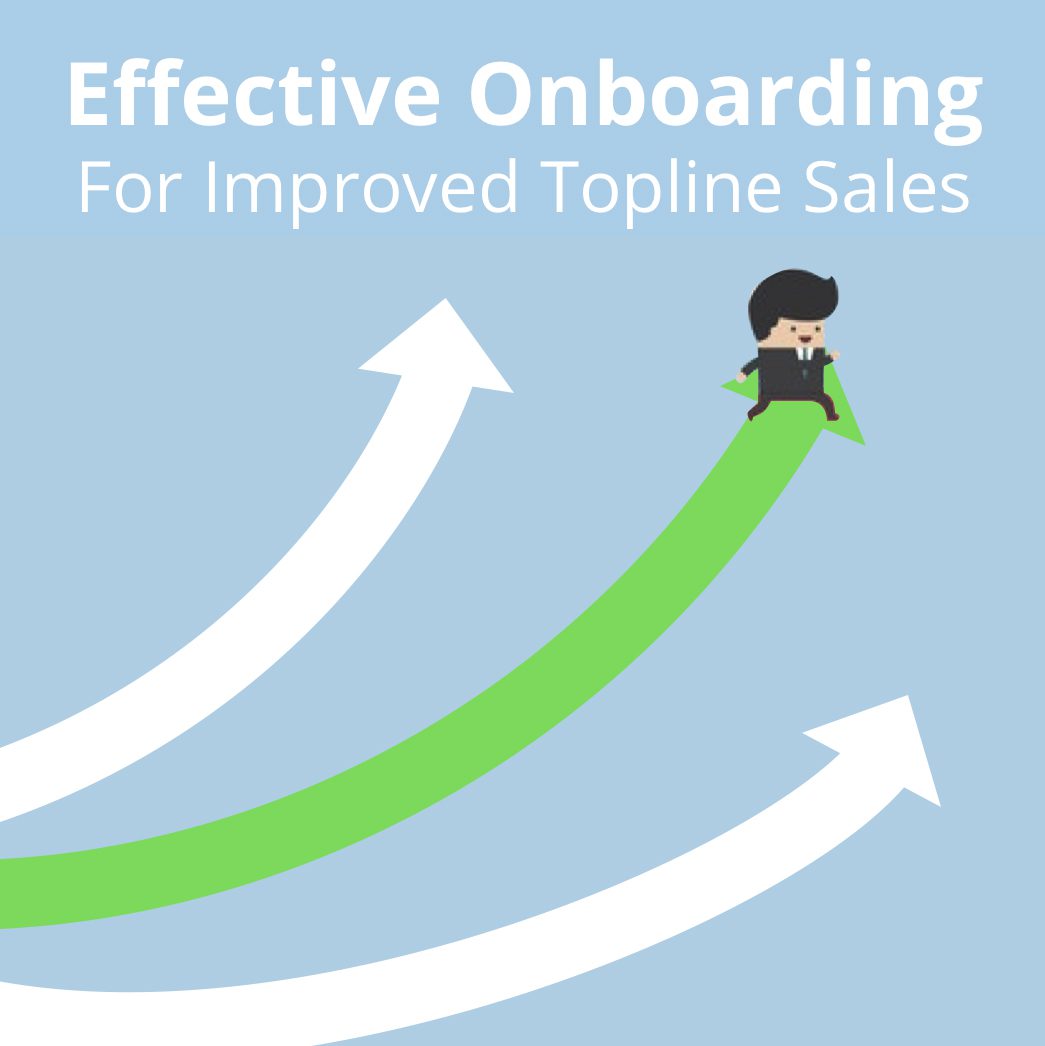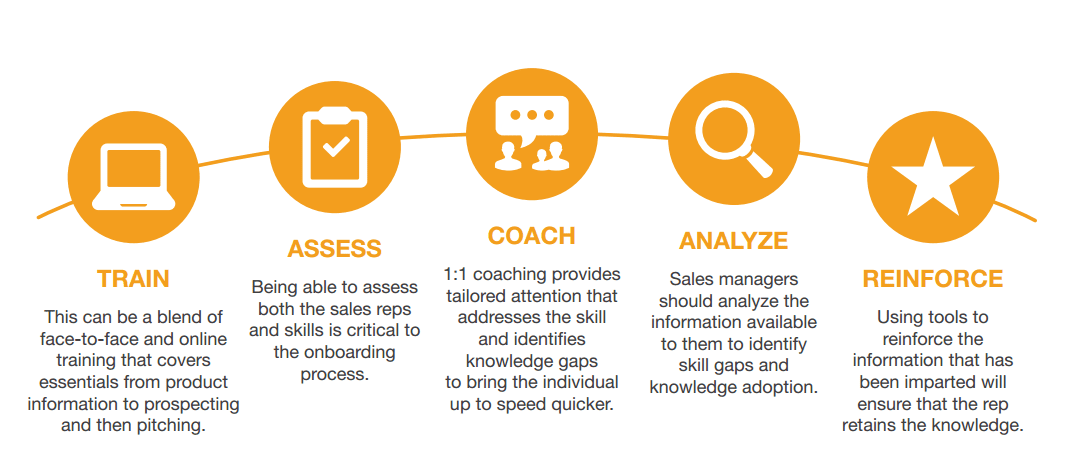Increase Your Topline Sales by Onboarding Effectively


You’ve just recruited some really promising sales reps with an impressive track record as rainmakers. On day one, HR arranges their computer, gives them a smartphone, and takes them through the company’s online onboarding portal. The following month is a blur of job-specific training workshops and e-learning, as your new reps try to get up-to-speed on your product, target customers, and industry intel. The volume of information they are scrambling to absorb is overwhelming.
Fast forward 8 months and the rainmakers appear to be going through a dry spell. Many of your sales teams haven’t met their quota and your Sales Managers complain that their reps don’t seem to understand the product, let alone the needs of their customers. And you’re left having to explain the lackluster sales results to the Board.
It’s easy to blame the recruitment process here, but it’s more likely that your sales onboarding program could benefit from a more systematic approach.
You are not alone, according to a research done by Brigade Group, 50% of new hires never meet their quota even after onboarding.
What is onboarding for sales reps?
Onboarding is about making sure that the sales rep is truly sales-ready. It’s about understanding the industry, building detailed product knowledge, getting under the skin of the customer persona, learning how to qualify a lead, and pitching to them effectively. In short, onboarding is about learning “what to sell” and “how to sell”.
While new hire orientation can be done relatively quickly, onboarding is a process that can take up to 12 months. In my experience, with a robust process, the right tools, and effective measures, it is possible to cut down sales onboarding time by at least 30-40%. In fact, I’ve seen companies with about 100 sales reps increase their revenue by 8% as a result of effective onboarding. The potential value to the top line can be even higher for smaller sales teams.
I suggest following a five-step high-level sales onboarding process:


How do you measure if the onboarding was effective?
Following a process is one thing, but it’s only useful if you can measure and track how effective the onboarding has been for the new hire. I’ve found it to be most effective to benchmark new hires against existing sales reps. While no individual is the same, generally your existing sales reps fall into three categories:
- The A Players – These are your high performing sales reps who consistently exceed targets
- The B Players – They are just about meeting targets, and need some attention to keep them on track
- The C Players – These reps need some help and guidance to get them performing on quota
By predicting which category the new hires fall into, your sales managers can personalize their coaching efforts based on the needs of each individual. I’d suggest using the following 4 metrics to measure your new sales hires and the effectiveness of your onboarding program:
- Time to Complete Training – Where your training includes some self-paced learning modules and assessment, you can measure how long it takes someone to complete the program and demonstrate that they’ve absorbed the knowledge. This is one of the reasons using an effective online training program is particularly helpful for sales onboarding as it lets you automatically track this metric.
- Time for Sales Readiness – Ready to engage customers without the assistance of a more seasoned team member.
- Time to Close First Sales Deal – The amount of time it takes to make the first sale is a landmark measurement for both the individual and the business. However, when coupled with Time to Meet Quota, it provides a good indicator of the potential success of the new hire as well.
- Time to Meet Quota – At Mindtickle, we define productivity as the first month that the sales rep achieves their quota so this measurement is the most appropriate for our business. However, other industries with longer lead times or more seasonal products may consider it more appropriate to measure the first quarter in which quota is achieved instead. The important thing with this metric is ensuring that it is easy to measure.
- Average sales cycle (time to close deals) – In my experience, the time spent to close a deal is the best proxy for productivity. It shows how efficient the rep is in taking a customer through the sales process and getting a result. It also should be easy to measure through the tools available in your CRM.
This also helps provide a handy framework when you’re reporting upwards on how your new recruits are performing.
Using this process and measurement framework provides not only your managers with a well-structured process, but also gives your new hires the required support that will help them become sales-ready sooner and close deals faster.





